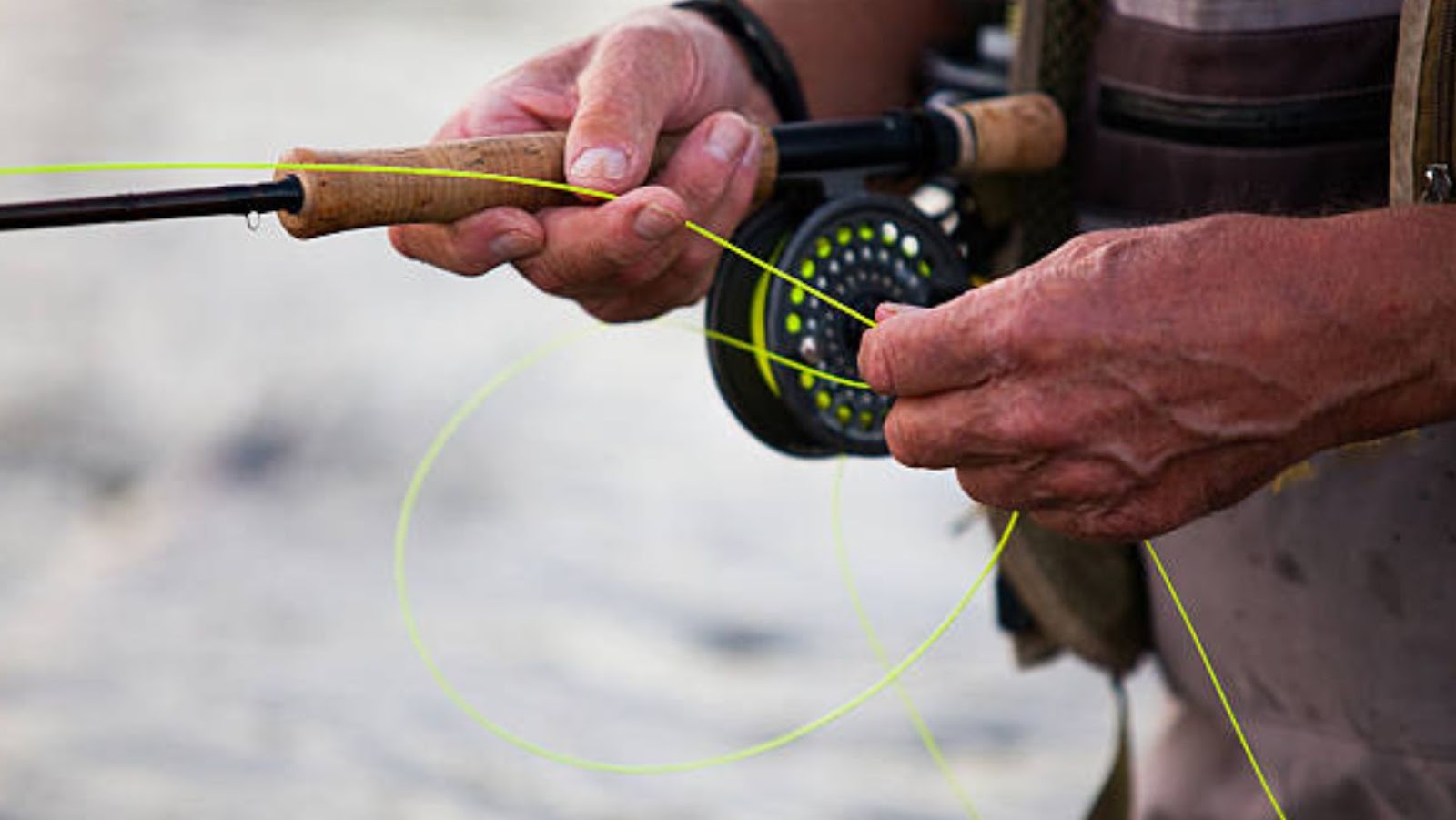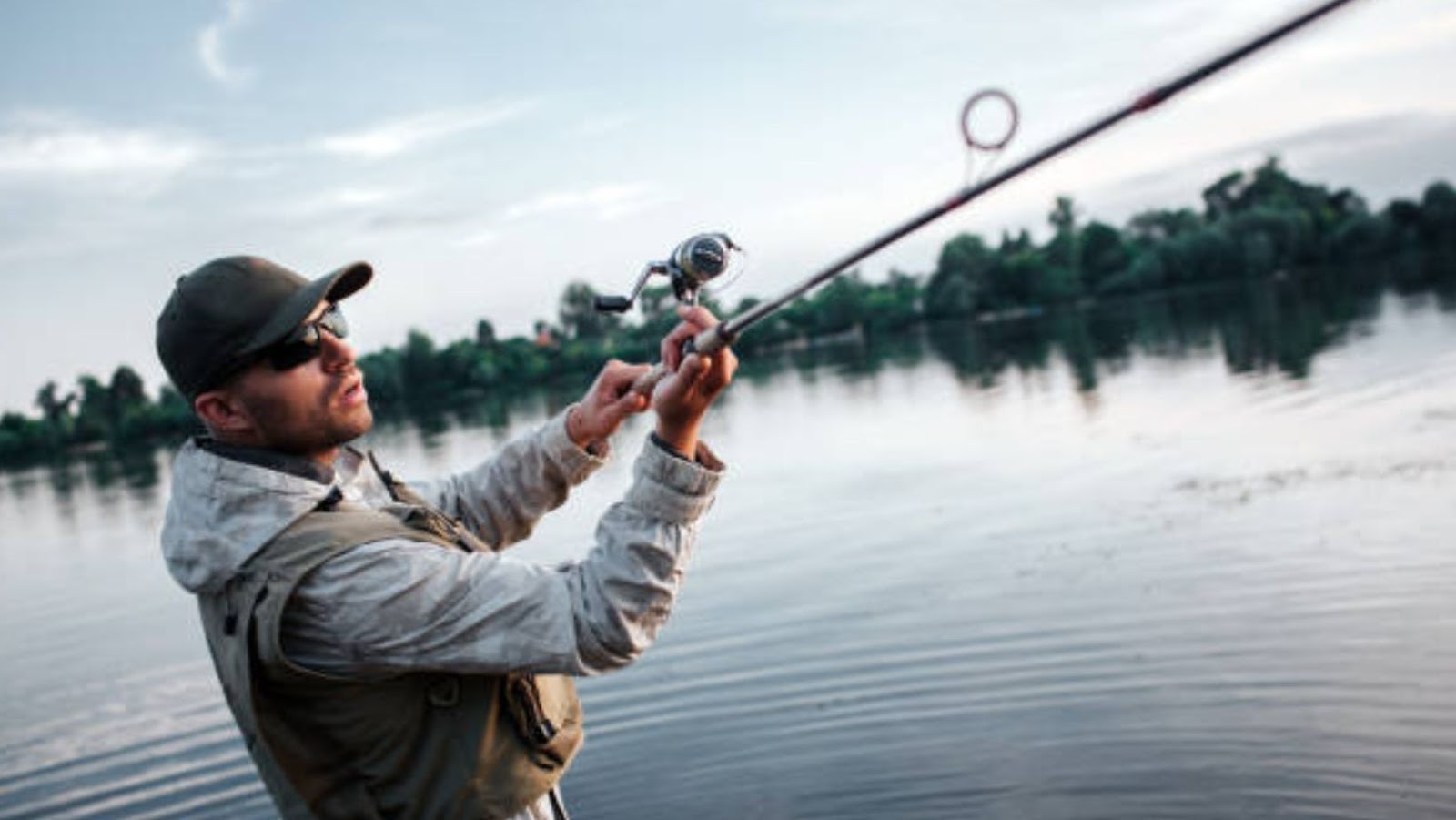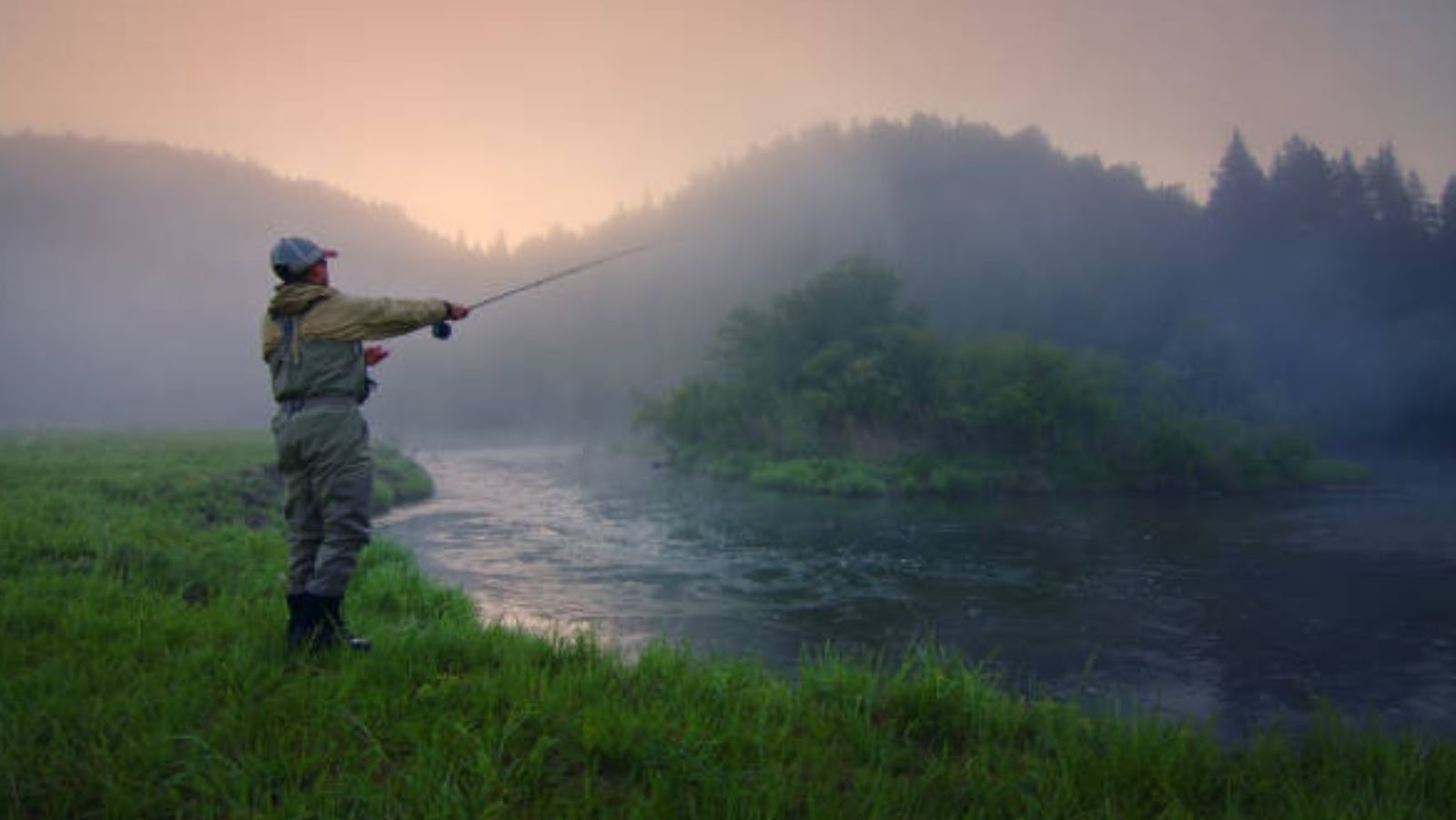
The History of Fly Fishing
To uncover the reason why it is called fly fishing, learn about the origin of fly fishing. The Beginnings of Fly Fishing and The Earliest Records of Fly Fishing are two sub-sections that you can explore to understand the evolution of this popular recreational activity.
The Beginnings of Fly Fishing
Fly fishing has a rich history that spans several centuries and is believed to have originated in ancient cultures. The method of using a fly to catch fish has evolved and adapted over time, leading to the popular sport we know today.
The first records of fly fishing date back to Rome, where they used artificial flies made from wool or feathers. In England, fly tying advanced during the 18th century, and the first texts explaining the sport were published. Fly fishing gained widespread popularity in Scotland during the 19th century, leading to innovations in rod design and casting techniques.
Intricate patterns and creative colors became prevalent in fly tying and helped make it a popular pastime worldwide. The sport’s evolution led to modern-day fly fishing, with advancements in equipment, tactics for different species, conservation efforts, and more.
If you’re an angler who values tradition and enjoys testing your skills against nature, then learning about the roots of fly fishing is crucial. By exploring its history, we gain insights into its techniques’ foundations while appreciating how anglers’ passion for this sport has stood the test of time. Discovering how it began can help you better prepare for your next angling adventure!
Long before Tinder, fly fishing was the original catch and release.
The Earliest Records of Fly Fishing
Ancient literature shows traces of fly fishing, where Macedonian anglers utilized artificial flies by tying fur and feathers on a hook. This date back to around 200 AD. Further advancement was witnessed during the Roman Empire in the early medieval period when leisure activities were widespread. A treatise by a Roman author, Aelianus, on fly fishing methods in the second century AD was also found.
The History also reveals that Celtic Native Americans used local materials like twigs and horsehair while fishing to catch trout. It has been recorded that these practices were prevalent among Irish people, with records dating back to 16th century Ireland. However, it was in the late 19th century that fly fishing became a popular sport in America.
Fly fishing has its roots attached to different countries worldwide now, including Japan and Australia. Interestingly, a Japanese theologian named Tenkara is known for utilizing a long rod akin to bamboo culms. He practiced this traditional method for fly fishing since the eighth century.
It’s fascinating to know that Fly Fishing started before Christ yet remains as conventional as ever, with fishermen from all over the world embracing its technique.
From primitive spearfishing to fly fishing vests, it’s clear that anglers have always been obsessed with accessorizing their catch.
Why Is It Called Fly Fishing
To understand the evolution of fly fishing, knowing the use of artificial flies and the development of fly lines and reels are crucial. These sub-sections create a comprehensive understanding of why fly fishing got its name. Artificial flies, fly lines, and revolutions have undergone tremendous transformations, making fly fishing the sport we know today.
The Use of Artificial Flies
The development of Artificial Flies has boosted the Fly Fishing industry. These flies are tied to mimic natural insects and improve the success of fly fishing by attracting more fish.
Types of Artificial Flies and Description
|
Type of Artificial Flies |
Description |
|
Dry Flies |
Floats on the surface of water mimic adult insects. |
|
Wet Flies |
Submerged in water, it mimics larvae and nymphs. |
|
Streamer Flies |
Mimics small fish or fry in distress. |
|
Terrestrial Flies |
Imitates land-based creatures like grasshoppers and crickets. |
Artificial Flies are different types that imitate specific aquatic insects such as midges, mayflies, and caddisflies. Dry flies float on the surface, whereas Wet flies are submerged to replicate larvae or nymphs. Streamer flies to imitate the frantic movement of small fish or fry in distress underwater, whereas terrestrial flies duplicate land-based creatures such as crickets.
It is said that fly fishing with an artificial fly leads to a more fulfilling experience for anglers. The artistry, skill, and technique while tying artificial flies require patience and attention to detail, which makes for an enjoyable experience rather than just catching fish.
According to a source from The American Fly Fishing Trade Association (AFFTA), “Fly Fishing drives over $1 billion annually towards conservation efforts to keep our waters clean.”
As fly lines became more sophisticated, fishermen realized they no longer had to rely on cursing and flailing for successful casts.
The Development of Fly Lines and Reels
The advancement of Fly Fishing gear has led to the development of various Fly Lines and Reels.
A Table detailing the history of Fly Lines and Reels:
|
Period |
Fly Line Development |
Reel Development |
|
15th Century |
Lines – Horse hair, Fur, Silk |
Reels – Wooden with a single-action movement |
|
19th Century |
Cotton braided lines replacing horsehair and silk Metallic lines were invented in 1848. Nylon fishing lines developed in the 1930s. All modern fly lines are based on American Mid-Arbor design, developed in 1951 by Lee Wulff. |
Reel designs are now geared towards saltwater use as well as freshwater. In addition, 3-D printing is used for experimentation with reel design and material properties. |
Modern Fly Lines and Reels have typically been developed or invented in the last two centuries (19th and 20th).
For instance, while Nylon fishing lines were first developed in the 1930s when the American Mid-Arbor design was created by Lee Wulff in 1951, fly lines became more practical.
The earliest known metal fishing reels came into existence around AD1200 when the Chinese were using them with rods made of bamboo.
Fly fishing has a rich history that dates back to ancient times. It is said that Izaak Walton’s book entitled The Compleat Angler (1653) served as reference material for many generations after its publication.
Fly fishing spread like an epidemic, infecting even those who had sworn they’d never touched a dead animal’s feathered bits.
The Spread of Fly Fishing
To understand the spread of fly fishing, with a focus on why it is called fly fishing, explore its spread through Europe and America. In Europe, it became popular for its challenging techniques and camaraderie, while in America, it played a significant role in developing frontier regions.
Fly Fishing in Europe
With the popularity of Fly Fishing in Europe rising, it has become a beloved pastime for many anglers. Here are six key points on European Fly Fishing:
- European rivers, such as the River Spey in Scotland and the Aare and Saane Rivers in Switzerland, attract fly fishers worldwide.
- While traditional salmon flies are popular in the UK, Czech nymphing techniques dominate Eastern Europe.
- France is known for trout fishing and has adopted fly tying as an art form.
- Northern Europe offers excellent sea-run brown trout fishing opportunities and numerous freshwater species.
- For fly fishing enthusiasts, Italy boasts world-class destinations such as the Melitta and Soca rivers.
- Fly fishing shows throughout Europe allow anglers to learn about new gear and techniques.
In addition, many European countries offer public access to fisheries that provide unique angling experiences without purchasing private permits or paying exorbitant fees. For instance:
The area surrounding Stockholm City offers year-round fly fishing opportunities for Baltic trout with great access points.
A fact: The oldest known reference to fly fishing dates back to 200 AD in Macedonia, where a Roman author mentioned Macedonian fishermen who used artificial flies to fool fish.
Fly fishing in America: where catching a fish is like winning a gold medal at the Olympics, but with a way smaller audience.

Fly Fishing in America
Revelatory Occurrence of Angling with Flies in the US
With its abundant water sources, America’s fishing scene saw a tremendous rise in popularity with the emergence of fly fishing. Originating from Europe, this technique reached US shores and skyrocketed in popularity during the late 19th century. In addition, diverse landscapes created opportunities for different types of fly fishing, ranging from small trout streams to majestic salmon runs.
Fly fishing’s hybridization with American culture and accessibility is attributed to several eminent figures, such as Theodore Gordon and Lee Wulff, who strive towards conservation efforts and innovative lure design. Unfortunately, experimenting with new variations led to more custom-tied flies and competition between rival companies.
The Green River is among the best places for fly-fishing in the country, featuring brown trout amidst a picturesque landscape. The legendary Henry’s Fork River also serves as a popular destination – teeming with elusive Rainbow Trout – drawing enthusiasts nationwide.
A prime example of the unprecedented success of fly fishing is Montana’s Big Hole River. Its remoteness affords adventurers ample space to explore untouched waters while nestled amidst breathtaking vistas encompassing over two hundred miles.
Ultimately, fly fishing today remains ingrained within modern culture, catering not only to recreation but also boasting numerous economic benefits through ecotourism and conservation tourism activities throughout the US.
Why is it called fly fishing? Because ‘annoying tiny insects’ just didn’t have the same ring.
Why is it Called Fly Fishing?
To understand why anglers refer to the sport as fly fishing, you’ll need to examine the origin of the term “fly” and the development of fly tying. These sub-sections explain the word “fly” and how it came to be used in connection with fishing. You’ll also get to explore how anglers began crafting their fly lures and the impact this had on the sport.
The Origin of the Term “Fly”
Fly fishing received its name because it involves using artificial flies as bait. These flies mimic natural insects that fish prey upon and are made from feathers, furs, and other materials tied together to create a lifelike fly.
Fishing with flies dates back to ancient times, with evidence in Greek and Roman literature. However, the modern fly fishing technique became popular in England during the 19th century. The first known book on the subject was published in 1496 by Dame Juliana Berners.
One unique aspect of fly fishing is that it relies heavily on skill rather than luck or brute force. Anglers must learn how to accurately cast their line and present their fly to the fish in a way that entices them to strike.
Take advantage of this rewarding and challenging form of angling. Give fly fishing a try and discover a new passion for the outdoors!
Fly tying: where dressing up a hook is more important than dressing up for a date.
The Development of Fly Tying
Professional fishermen’s quest for better ways to catch fish led to ‘Fly Fishing Tackle Development.’ It enabled them to cast their lines further into the waters, reaching areas where fish could be found. As such, fly tying developed parallelly with it.
The History of Fly Tying
|
Year |
Activity |
|
200 AD |
The first records of fly-tying originate from Macedonia |
|
1496 |
The publication of ‘Treatise on Fishing with an Angle by Dame Juliana Berners was the first book to distinguish between wet and dry flies |
|
1662 |
Development of Hobson’s Apprentice, a device that mechanized the winding of silk thread onto hooks |
|
1770s |
Wire-wrapped hooks begin manufacturing |
The process started in Macedonia as early as 200 AD and continues even today. Fly fishing involved much simpler tackle than modern-day equipment in the early days. Tyers created a minnow-like bait pattern using furs and feathers covering an iron hook called the “artificial fly.” Plumes from exotic birds like peacocks were used—ostrich feathers making up the wings for larger patterns.
Pro Tip: When choosing materials for your flies or tying them in hand, ensure they provide quality underwater movement.
From dry fly to nymphing, these styles and techniques will have you hooked like a trout on a line.
Popular Styles and Techniques
To master the art of fly fishing, you need to know the popular styles and techniques. In addition, you must learn about the different approaches used to understand why it’s called fly fishing. Dry fly fishing, wet fly fishing, and nymph fishing are some styles you can explore to become a skilled angler.
Dry Fly Fishing
For those looking for an angling technique that requires patience and precision, there’s a popular style that involves fly fishing without submerged bait. Instead, anglers use artificial or dry flies to lure fish to the surface. By appearing like insects skittering across the water, these lightweight lures can create an enticing visual display that prompts fish to leap out of the water to grab them.
Dry fly fishing experts recommend carefully examining the body of water before choosing a spot, observing nearby insect hatches, and selecting their dry fly accordingly. Timing is also critical: it’s best to fish in the early morning or late afternoon when insects are most active. And stealthy movements and delicate casts are key skills – anything too abrupt or noisy could spook fish and ruin chances for a catch.
One special technique used in dry fly fishing is “slack line casting.” This means deliberately adding slack in the line between the rod tip and lure when casting into currents or rough waters. The lack of tension makes for a more natural presentation on top of the water and gives extra time for fish to bite before feeling any resistance from hooks.
Consider using lighter-weight gear if you’re just starting with this technique; consistently practicing casting techniques will help refine your skills. With enough experience and dedication, dry fly fishing can be an exciting and rewarding challenge that provides unique opportunities to experience nature’s beauty up close.
The fish are the only ones who get a truly immersive experience for wet fly fishing.
Wet Fly Fishing
Using the subcategory of fly fishing that involves wet flies, anglers can successfully catch various fish species in different water environments. Here’s a 6-step guide to damp fly fishing:
- Determine the Target Species and Location
- Choose the Right Wet Flies
- Set up Your Gear with Appropriate Tackle
- Cast Your Line Appropriately
- Retrieve Your Flies Properly
- Pay Attention to Strikes
Furthermore, consider varying your retrieve speed and patterns for better success and experiment with different depths or fishing with multiple flies at once.
Pro Tip: Keep your line tight throughout the process to accurately detect strikes, leading to more successful catches.
Nymph fishing: for those who prefer their bait to be bug-sized and their patience to be Herculean.
Nymph Fishing
When it comes to fly fishing, catching trout can be challenging. However, one of the most effective methods is using artificial flies that mimic nymphs underwater – a technique known as “Subsurface Insect Imitation.” To increase your chances of success with nymph fishing, follow these six steps:
- Choose the right nymph pattern for the conditions
- Attach the nymph to your leader using a knotless tapered leader or a specialized nymphing setup
- Cast upstream and allow the nymph to drift naturally downstream, keeping your line tight and watching for any movement or changes in tension
- Maintain control and contact with the nymph by mending your line and adjusting its path to keep up with the current flow.
- Use subtle rod movements to add lifelike motion to the fly based on how you read the water.
- Be patient and persistent – it may take time for a fish to become interested in your offering.
It’s worth noting that while nymphing is often associated with subsurface fly patterns, you can sometimes also use dry flies as indicators above them. While numerous variations of this technique are available, it is unique among other forms of fly-fishing. Its focus on insect imitations creates a more natural presentation attractive to fish. This technique allows anglers to masquerade bait without overbeating or relying on luck. Throughout history, fishermen have experimented with various methods of presenting flies underwater. One of the earliest accounts of using artificial insects dates back thousands of years in Ancient Macedonia. It has certainly come a long way since then! You can catch more flies with honey, but why not try fly fishing instead?
Fly Fishing Today
To understand the modern-day significance of fly fishing, delve into the ‘Fly Fishing Today’ section with its sub-sections ‘Conservation Efforts in Fly Fishing’ and ‘The Role of Fly Fishing in Tourism.’ These sub-sections reflect on the current emphasis on protecting the environment while enjoying this outdoor activity and how it contributes to tourism.
Conservation Efforts in Fly Fishing
Fly anglers have been taking initiatives to protect and preserve the delicate ecosystems they fish. By participating in river and stream clean-up initiatives and promoting catch-and-release practices, fly fishing enthusiasts strive towards sustainability and preserving natural resources. They also educate novice anglers about proper conservation methods, such as avoiding wading through spawning beds or fishing during sensitive fish migration periods.
Moreover, fly fishermen advocate for responsible land use policies that safeguard habitats, species, and water quality. They encourage restoring stream banks, controlling erosion, maintaining riparian vegetation, and introducing nontoxic fishing equipment for the health of aquatic organisms.
In addition to their sweeping efforts towards environmental protection, fly fishing organizations are active in habitat restoration projects that benefit wildlife and anglers through long-term benefits such as improved fish population size. For example, Trout Unlimited’s Embrace-A-Stream program has funded over 1,200 projects across 44 states.
Trout Unlimited’s 2019 annual report states, “Over the last seven years, TU [Trout Unlimited] members invested more than $20 million into on-the-ground trout restoration work.” These conservation efforts benefit trout populations and provide recreational opportunities for generations to come.
Fly fishing brings tourists like bait to a hook, but instead of catching fish, they capture memories and Instagram-worthy photos.

The Role of Fly Fishing in Tourism
In modern-day tourism, fly fishing has become integral to many travelers’ itineraries. This activity that involves catching fish with artificial flies tied to a line has gained immense popularity globally due to its recreational and aesthetic value. Moreover, the immersive experience that comes with fly fishing aligns with the current trend of travelers seeking unique and authentic experiences.
Fly fishing in tourism allows anglers to explore blue-ribbon streams, crystal-clear lakes, and meandering rivers in scenic territories worldwide. These locations are often rural, providing a peaceful atmosphere to relax and appreciate nature’s beauty while pursuing their passion for angling. Thus, the role of fly fishing in tourism is instrumental in promoting sustainable travel practices while contributing to local economies.
Additionally, fly fishing has historical significance across cultures worldwide. The ancient Greeks and Romans documented the use of flies as bait, indicating the recurrent human pursuit of recreational activities related to nature from antiquity. This timeless pastime can be experienced even today through various means like single-handed casting or spey casting techniques coupled with modern equipment technology advancements.
Overall, fly fishing fosters sustainable ecosystem management while aiding local economies and provides tourists with an enchanting experience rooted in ancient history entrenched within contemporary traveling culture.
Conclusion: The Enduring Legacy of Fly Fishing
The Enduring Legacy of Fly Fishing lies in its simultaneous embrace of tradition and innovation. Generation after generation, anglers have honed their skills in pursuit of the elusive catch. With advancements in technology, fly fishing has become more accessible. But while gear has evolved, techniques remain steeped in tradition. The sport’s timeless appeal owes to the harmony between man and nature it creates.
Fly fishing boasts a rich history dating back to ancient times. In medieval Europe, anglers devised cunning methods for tricking fish with handmade flies. Today, with the support of fly-fishing schools and communities around the globe, the sport continues to flourish. Anglers can experience a deep connection with nature, whether in freshwater or saltwater.
Beyond its intrinsic beauty and meditative qualities, fly fishing contributes greatly to conservation efforts worldwide. By adhering to catch-and-release practices and environmentally sustainable habits, anglers contribute to preserving natural habitats for future generations.
With fly fishing growing in popularity worldwide, there is no better time to experience its unique charm first-hand. Whether you’re a seasoned pro or a newcomer to the sport, immersing yourself in its timeless traditions is an experience unlike any other—an opportunity not to be missed!
